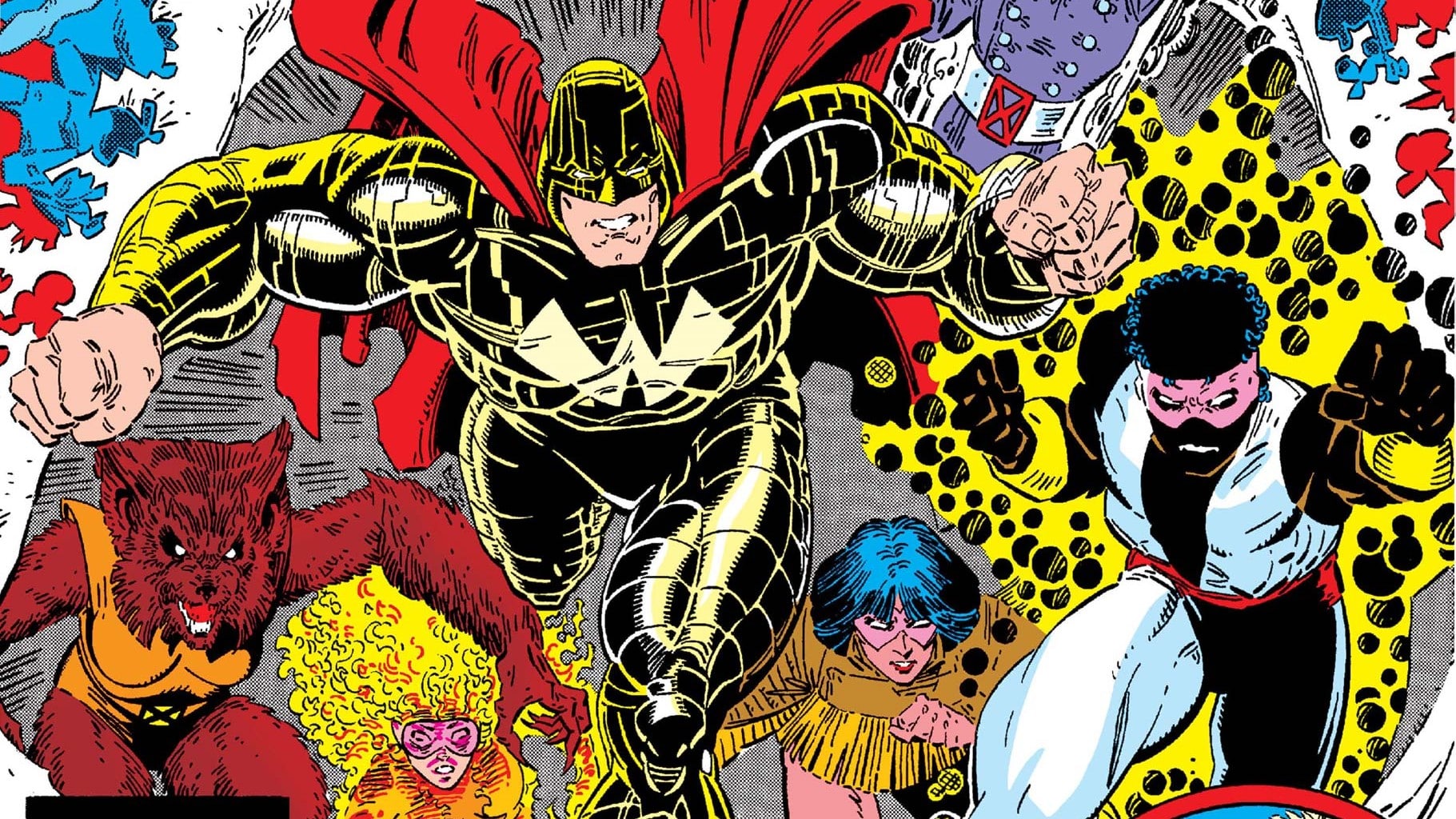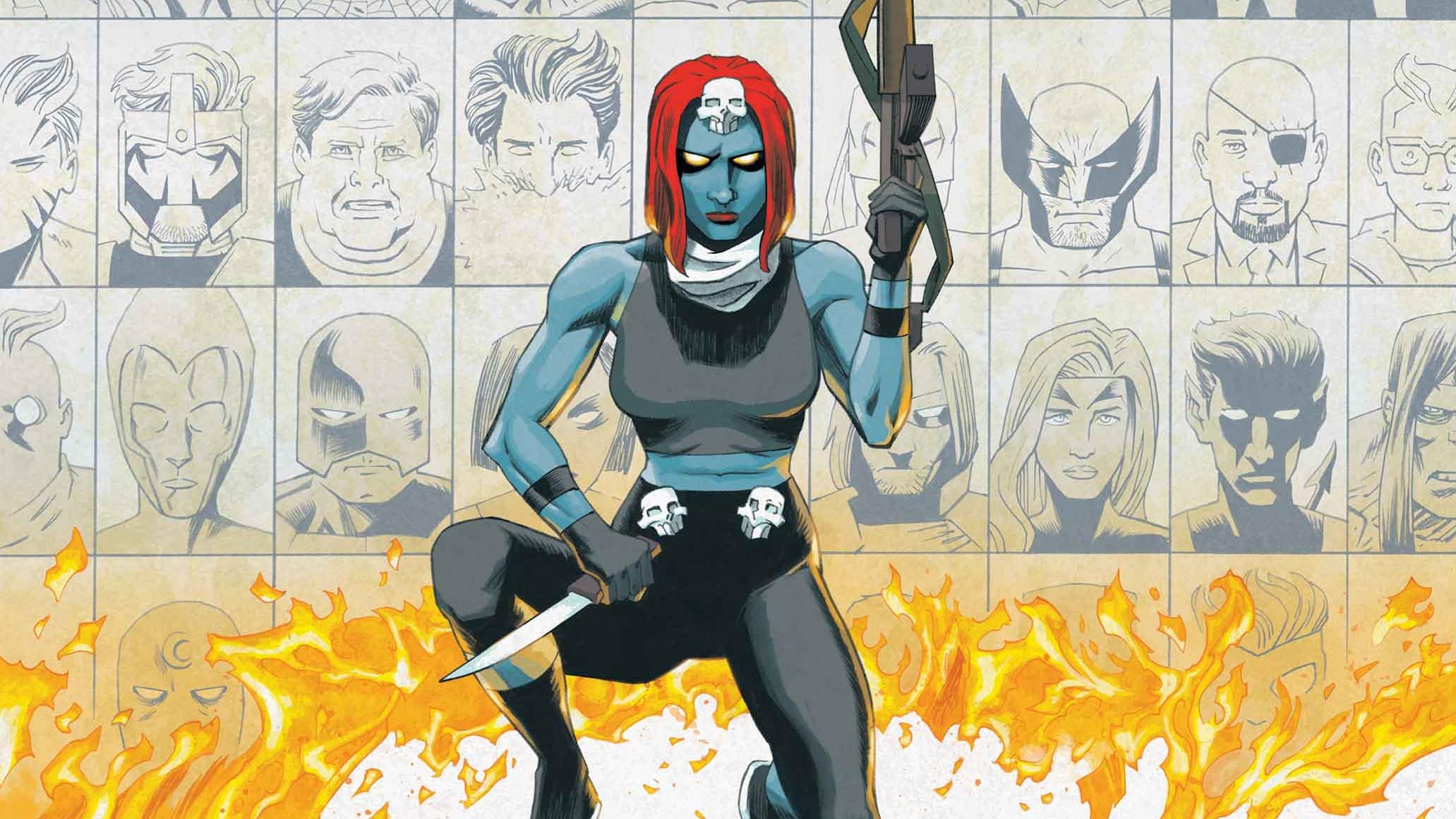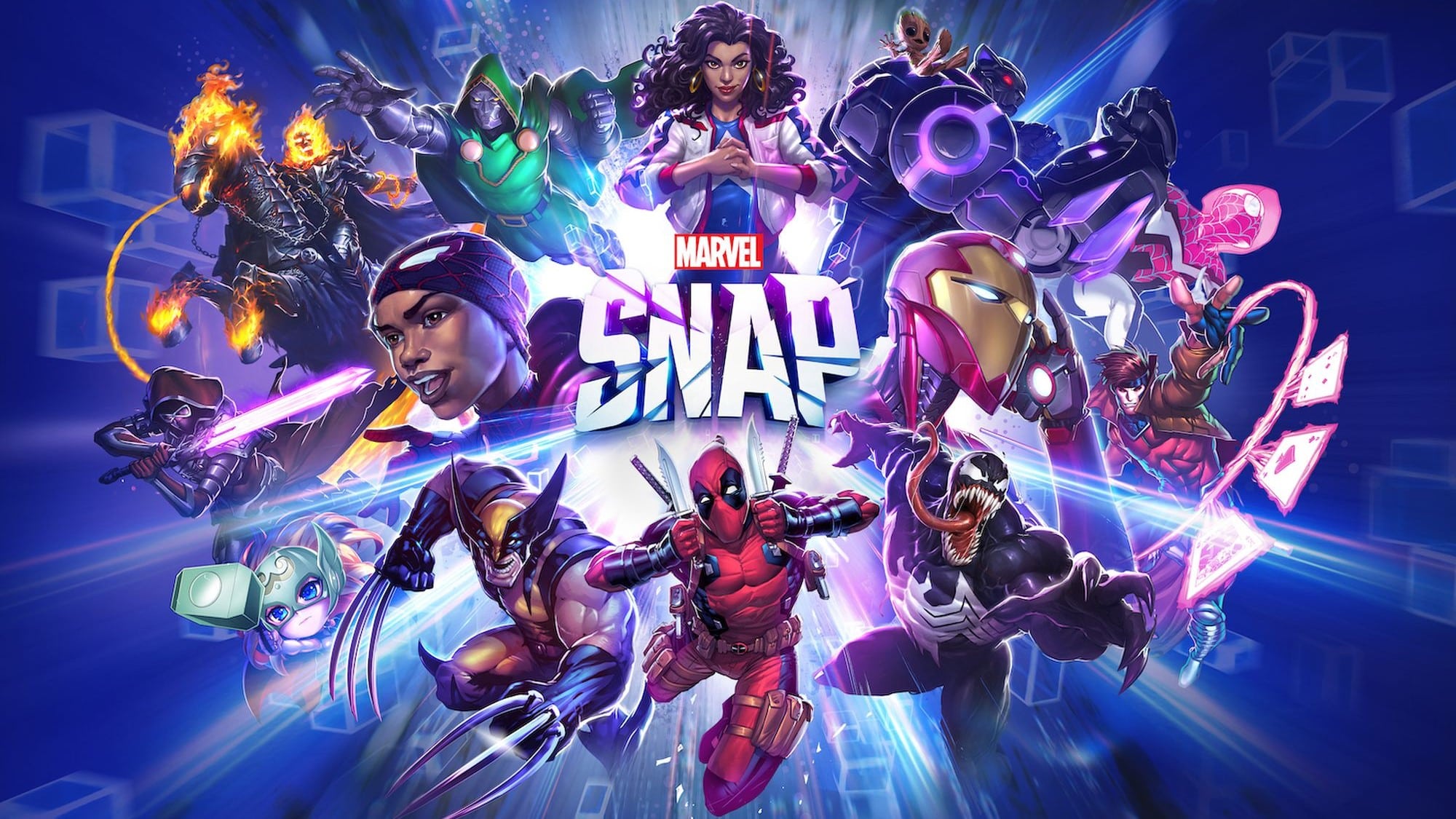I have a confession to make. When I was younger, I read comics like they were things, objects of desire exceeding the messiness of creation. I knew they were stories and I knew they had art. But I rarely thought about the people who made them. I would read a Marvel comic book or a DC comic book or a tie-in to “Civil War” or “The Death of Superman” and think about it in those terms—as a manifestation of a corporate storyverse rather than an individual text written, penciled, inked, colored, lettered, and edited by human beings with their own artistic goals and styles.
This started in childhood, when it was mostly a matter of ignorance. But it continued into adulthood, even as I began reading superhero comics more broadly and seriously, eventually studying them academically. In my defense, I got better. The more I read, the more I noticed my preference for certain creators and especially certain artists. In the context of my academic work, this meant realizing a seemingly obvious truth: that comics are a visual medium, whose unique approach to picturing everything from galactic punch ‘em ups to deeply personal internalizations of trauma is exactly what makes them great. I also realized that every creator, even those working within the confines of mainstream “house styles,” pictures things differently; even a single set of pencils can be multitudinously transformed by different inks or colors. Whether we’re talking about the combination of text and images or the complicated relationships between artists and writers or pencilers and inkers, colorists and editors, comics are both uniquely visual and deeply collaborative.
I called this truth obvious, and it should be. But for me, this belated realization was followed by another, which I’ve been forced to keep realizing each time I sit down to read a bunch of folks writing about comics. And that realization is: entirely too many people apparently never came to the same obvious conclusion that comics are a visual, collaborative medium, because entirely too many people keep talking about comics as something that’s written instead of drawn (let alone penciled, inked, colored, lettered, and edited). This happens within both comics criticism and comics scholarship. But because I’m primarily an academic, and because academia’s cultural capital exerts a certain influence on comics criticism, this essay will focus on the ivory tower part of the plot. More bluntly—this essay is about why so many academics don’t seem to realize comics have pictures. It’s also about the consequences of this ignorance, which may or may not be willful but is always, nonetheless, harmful.
In this article, when I use examples, I won’t name names; I’d rather start a conversation than call anyone out. But I do need to show you some of what I’ve seen, if only so you can share in the pain of seeing it. Every year, I sit through several academic conference papers where the presenter offers a thorough summary of a comic’s plot with little to no mention of how it’s drawn or even the fact it has pictures. Sometimes, during the Q&A, I’ll bravely raise my hand to ask, “how do you think the style contributes to the meaning of the work?” In response, I often receive some version of, “I hadn’t thought about it, but thanks for the comment!” Many academic books about comics similarly focus almost exclusively on plot and dialogue, and often describe comics as created solely by the writers who didn’t draw them. I’m sure you’ve heard someone refer to “Alan Moore’s Watchmen” a time or two; I’m sure I’ve heard it many more times than that. Last year, I peer reviewed two separate drafts of an article for a respected Comics Studies journal, begging the author, both times, to include some discussion of the art or, at minimum, include the name of the artist. The version that eventually went to print did say the artist’s name. But it still didn’t discuss the art. I’ve also read plenty of books and articles about comics that fail to mention the names of any artists or writers. In this case, the analysis and even the bibliography simply lists issue numbers and dates, as though the comics in question simply sprang, fully formed, from the godlike brow of the corporate entity that published them.
To be fair, scholars are much more likely to ignore the art when they’re talking about mainstream comics, namely superhero comics, than when they’re talking about certain types of graphic novels, that is, longer, sustained narratives that are often grounded in the real world and tend to reflect the personal visions of one or two creators. There are many reasons for this discrepancy, some of which are simple and some of which are more complicated, rooted in the history of comics scholarship and its connections to histories of studying literature, fine art, and film.
Let’s start simple. Most of us have never been taught to read pictures. Even if you’re lucky enough to attend an elementary or high school that offers art history (mine didn’t), learning to read visual texts always takes a backseat to learning to read written texts, since only the latter is commonly understood as a central component of literacy. This is why so many folks still find Scott McCloud’s 1993 book Understanding Comics so revelatory. For many young readers, comics are the first time they’re actively inspired to think about pictures as a way of telling stories. And Understanding Comics is often the first book they encounter that helps explain, in an accessible way, how visual storytelling works. Speaking as someone who’s taught Understanding Comics many times—for plenty of college students, it’s also their first encounter with any book that talks about how to read any type of pictures. All of which is to say that when critics or fans neglect to describe or discuss the significance of comics art, it isn’t necessarily their fault; this is a larger societal issue related to how we teach and value visual art.
Academics have fewer excuses, since we’re trained to read all manner of texts while attending to context and style. Yet the academic field of Comics Studies developed primarily in literature departments and organized itself around the types of comics that were considered useful for advancing existing literary theories. If you were only taught one comic in high school or college, it was probably Art Spiegelman’s Maus, Alison Bechdel’s Fun Home, or Marjane Satrapi’s Persepolis. You were taught these comics because they’re very good, but also because academics decided they’re very good, because they’re useful for talking about stuff academics wanted to talk about anyway, like localized, queer, and feminist representations of consciousness and postmodern approaches to writing history. The fact these widely taught and analyzed graphic novels are the visions of singular creators isn’t a coincidence. In Film Studies, auteur theory—that is, the theory that a director exercises dominant control over the meaning of a film—helped legitimize the field. Similarly, elevating singular creators helped legitimize Comics Studies. Turning film directors and comics creators into auteurs helped incorporate film and comics into existing frameworks for appreciating literature and fine art, where great works have historically been understood as the work of great men (and, more recently, great women).
Basically, film and literature scholars can use tools they already have to study comics by singular creators. But when they’re faced with figuring out something like superhero comics, which are generally the product of multiple—even competing—creative and corporate voices, they tend to struggle. There’s also some snobbery involved. Academics are trained to be discerning, and to critique each other for not being discerning enough. As such, studying pop culture, which is generally assumed to be bad art, has always been risky; you don’t want to look dumb by suggesting a bad thing is actually good. Historically, academics have managed this risk by keeping things like television at arm’s length. While auteur theory helped Film Studies become its own discipline, television is often treated less like an art form than a type of corporate product within sociology-inflected fields. In the most reductive versions of this scholarship, pop culture isn’t something individual people make so much as a mirror for popular beliefs or an advertisement for hegemonic values.
Plenty of pop culture scholarship is smarter than this. But too much scholarship on superhero comics continues to struggle, which is reflected in the continued neglect of the ways art and artists, as well as individual writers, contribute to the meaning of comics. In this, I’m compelled to recall a widely praised academic book that features extensive, and seemingly well-meaning, critiques of racist tropes in a particular comic book series without once mentioning that the person who wrote the series is both Black and an outspoken advocate for racial justice. While the omission doesn’t invalidate the critique, it’s definitely strange. Or maybe it’s normal, since this type of omission is clearly common enough to be broadly accepted. But of course, the human beings responsible for visualizing the comic are even more thoroughly omitted. This is another one of those books that rarely mentions art at all, except to say it’s bad, which is to say, only worth discussing to the extent that it simplistically reflects harmful stereotypes.
Obviously, plenty of comics do reflect harmful stereotypes, in both their writing and their art. But most of the time, it’s more complicated than that, and talking about the art will always be important to appreciating that complexity. This is true of both art that’s widely considered good and art that’s widely considered bad. You really can’t (or at least shouldn’t) talk about queer themes in the Utopia-era X-Men comics written by Ed Brubaker and Matt Fraction without also talking about how those themes might be undercut by the art of Greg Land, who frequently traces images from very heteronormative pornography. Alternatively, you really can’t (or at least shouldn’t) talk about Greg Land’s Utopia-era porn tracing without also talking about how that reductive male gaze-y-ness might be undercut by queer themes in Ed Brubaker and Matt Fraction’s plots and dialogue. Similarly, you probably shouldn’t talk about Jessica Jones as the sole creation of writer Brian Michael Bendis when the character’s official co-creator is artist Michael Gaydos, and artist David Mack. Mack, who created covers for Alias, the series that introduced Jessica, and also worked on the opening title sequence for the Jessica Jones Netflix series, modeled the character after his own girlfriend. Yet I recently read a book of academic essays that repeatedly ignored Mack and Gaydos’ contributions, which was, once again, both strange and depressingly normal.

It should go without saying, but just in case—you also definitely shouldn’t talk about Stan Lee as the singular creator of the Marvel universe. Jack Kirby and the Kirby Estate engaged in a long fight for credit and compensation for Jack’s important, arguably central role in creating the Fantastic Four, the Avengers, Thor, the X-Men, the Hulk, and many more characters officially owned by Marvel. To have these characters popularly imagined to be the sole creations of Lee underscores the material consequences of devaluing comics artists. This isn’t just a philosophical argument; it’s also about worker’s rights. If academics continue to suggest mainstream comics artists don’t matter, Marvel will keep humming along secure in their belief that the people who draw their characters, like the award-winning artist Jen Bartel, don’t deserve raises or residuals. And companies like Amazon will continue to privilege the names of comics writers in their digital marketplace, so that only writers get to benefit from hyperlinks to other purchasable work. And major literary awards will continue being confused about what comics artists actually do. For instance, when Mariko and Jillian Tamaki’s 2008 graphic novel Skim was nominated for the Governor General’s Award, commonly understood as the most prestigious literary award in Canada, the committee only nominated Mariko. Apparently, this visual story’s pictures were irrelevant to its value; in the minds of the Canadian literary establishment, only the words were worthy of praise.
To once again put it simply: devaluing comics artists devalues comics. In any comic, the visualization of the story isn’t just indispensable to that story’s meaning. Arguably, the pictures are even more important than the words. In a comic, great art can save a mediocre story, but great words can rarely, if ever, compensate for lackluster art; most comics fans can picture this, even if they don’t have the words to say it. No one’s buying fancy coffee table books reproducing comic book scripts. But lots of people want fancy coffee table books reproducing comics art. They also want artist commissions and variant covers and are willing to pay a lot for the privilege. You might think $20K is too much for a Jim Lee commission. But plenty of other people disagree with you, since that’s what Lee’s charging. And he has every right to do so.
Lee and his Image Comics cohorts always understood, unlike the Governor General’s Award committee, that art is essential to the value of comics. Maybe Marvel didn’t immediately collapse when the Image seven left to form their own company. But it did declare bankruptcy four years later, then tried to resurrect its comics universe with the help of the Image expats. Sure, some of the comics the Image founders both wrote and drew suggest that when it comes to making good comics, good words might still have a role to play. But these artists knew their value, and they knew it in part because they knew how comics work—that they’re collaborative but first and foremost visual.
Does this mean Rob Liefeld is smarter than some of the folks with PhDs who write about superhero comics? This is an intentionally silly question, but it’s telling that it’s a question worth posing, even facetiously. And it will keep being a question worth posing as long as people who should really know better keep acting like stories with pictures don’t have them.

Anna Peppard
Anna is a PhD-haver who writes and talks a lot about representations of gender and sexuality in pop culture, for academic books and journals and places like Shelfdust, The Middle Spaces, and The Walrus. She’s the editor of the award-winning anthology Supersex: Sexuality, Fantasy, and the Superhero and co-hosts the podcasts Three Panel Contrast and Oh Gosh, Oh Golly, Oh Wow!





